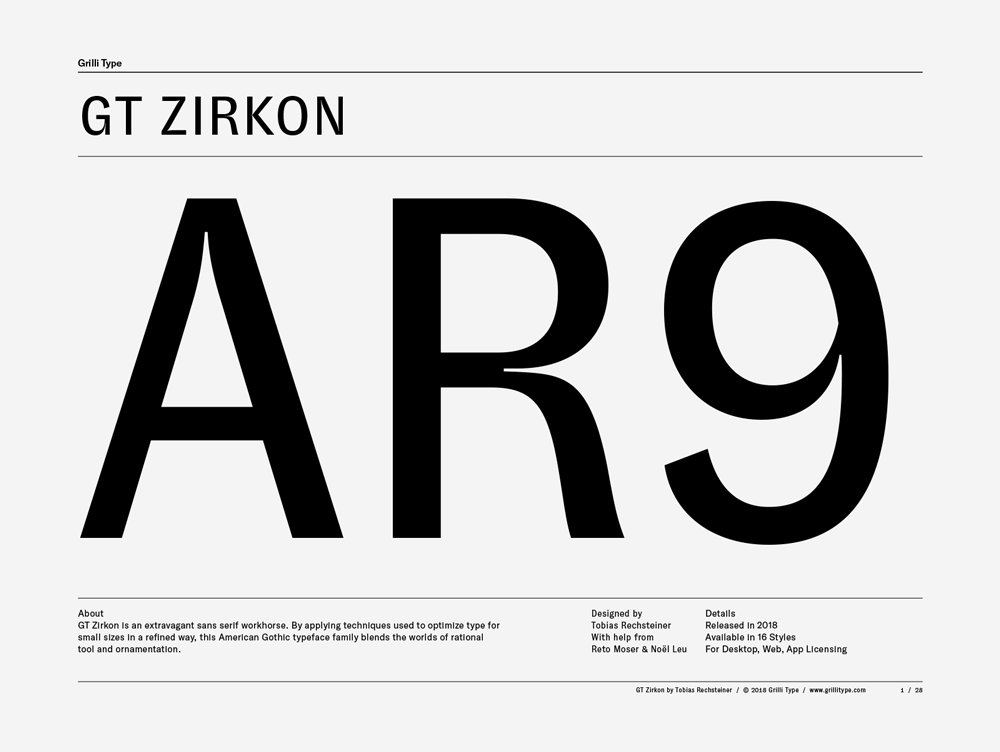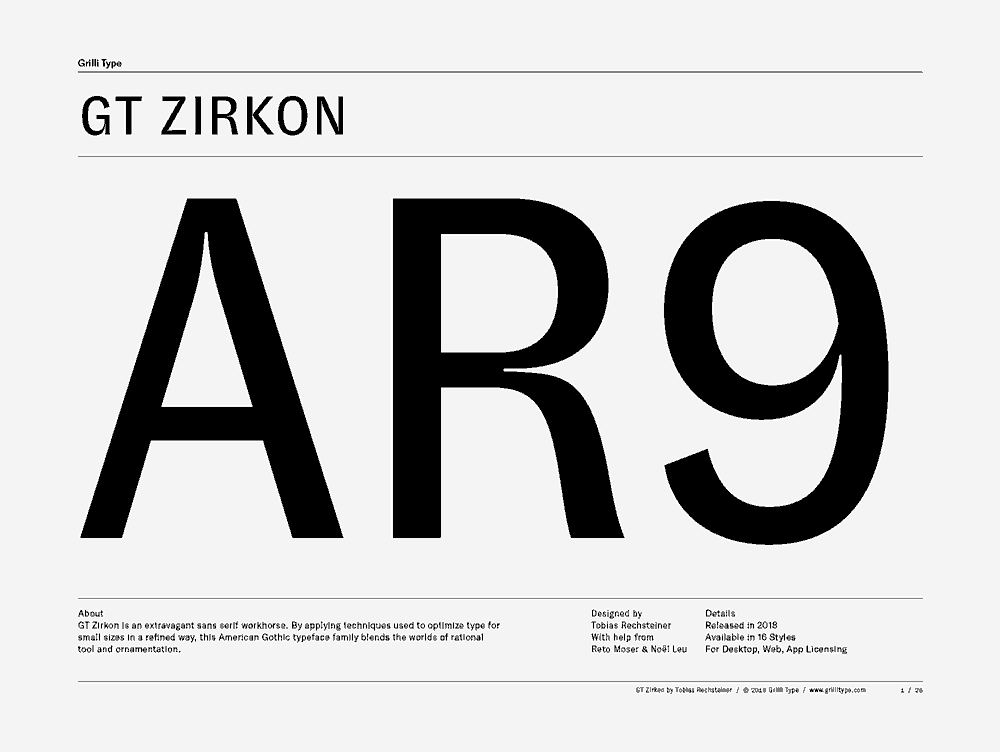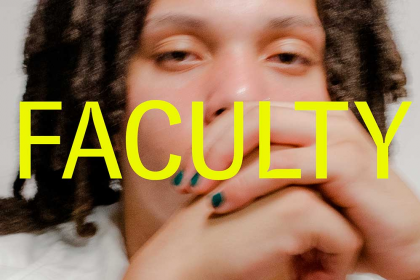GT Zirkon
Family overview
- Ultra Light Italic
- Thin Italic
- Light Italic
- Book Italic
- Regular Italic
- Medium Italic
- Bold Italic
- Black Italic
- Ultra LightThe dark brown to black color observed in most Zircon crystals is caused from iron oxide impurities.
- Ultra Light ItalicConnected to internal radiation damage, these processes partially disrupt the crystal structure and partly explain the highly variable properties of zircon.
- ThinMinerals are classified by key chemical constituents; the two dominant systems are the Dana classification and the Strunz classification.
- Thin ItalicAs short and stubby crystals, as well as prismatic which are sometimes elongated.
- LightZircon is mainly consumed as an opacifier, and has been known to be used in the decorative ceramics industry.
- Light ItalicZircon is an important gemstone, with several color forms used in various forms of jewelry.
- BookThe dark brown to black color observed in most Zircon crystals is caused from iron oxide impurities.
- Book ItalicOn the Isle of Skye near Ireland, is a chapel dedicated to St. Columbus, and on the altar is a round crystalline blue stone held sacred to weather and health.
- RegularThe name derives from the Persian zargun meaning gold-hued; this word is corrupted into “jargoon”, a term applied to light-colored zircons.
- Regular ItalicConnected to internal radiation damage, these processes partially disrupt the crystal structure and partly explain the highly variable properties of zircon.
- MediumMineral classification schemes and their definitions are evolving to match recent advances in mineral science.
- Medium ItalicDuring the growth process, crystals are also highly susceptible to consciousness imprinting, whereby the meditations, through-patterns, healing energy or bioelectric field identity of the grower may be enjoined within the crystalline structure and memory.
- BoldMinerals are classified by key chemical constituents; the two dominant systems are the Dana classification and the Strunz classification.
- Bold ItalicThe dark brown to black color observed in most Zircon crystals is caused from iron oxide impurities.
- BlackNew York University chemists have created three-dimensional DNA structures, a breakthrough bridging the molecular world to the world where we live.
- Black ItalicThe English word “zircon” is derived from “Zirkon”, which is the German adaptation of this word.
- Settings
Typeface information
GT Zirkon is an extravagant sans serif workhorse. It blends the worlds of rational tool and ornamentation by applying techniques used to optimize type for small sizes in a refined way.
Typeface features
OpenType features enable smart typography. You can use these features in most Desktop applications, on the web, and in your mobile apps. Each typeface contains different features. Below are the most important features included in GT Zirkon’s fonts:
- SS01
- Alternate Arrows
Volume ↗
- SS02
- Alternate f
Refraction
- ONUM
- Oldstyle Figures
0123456789
- SMCP
- Small Caps
Ore Deposit
Typeface Minisite
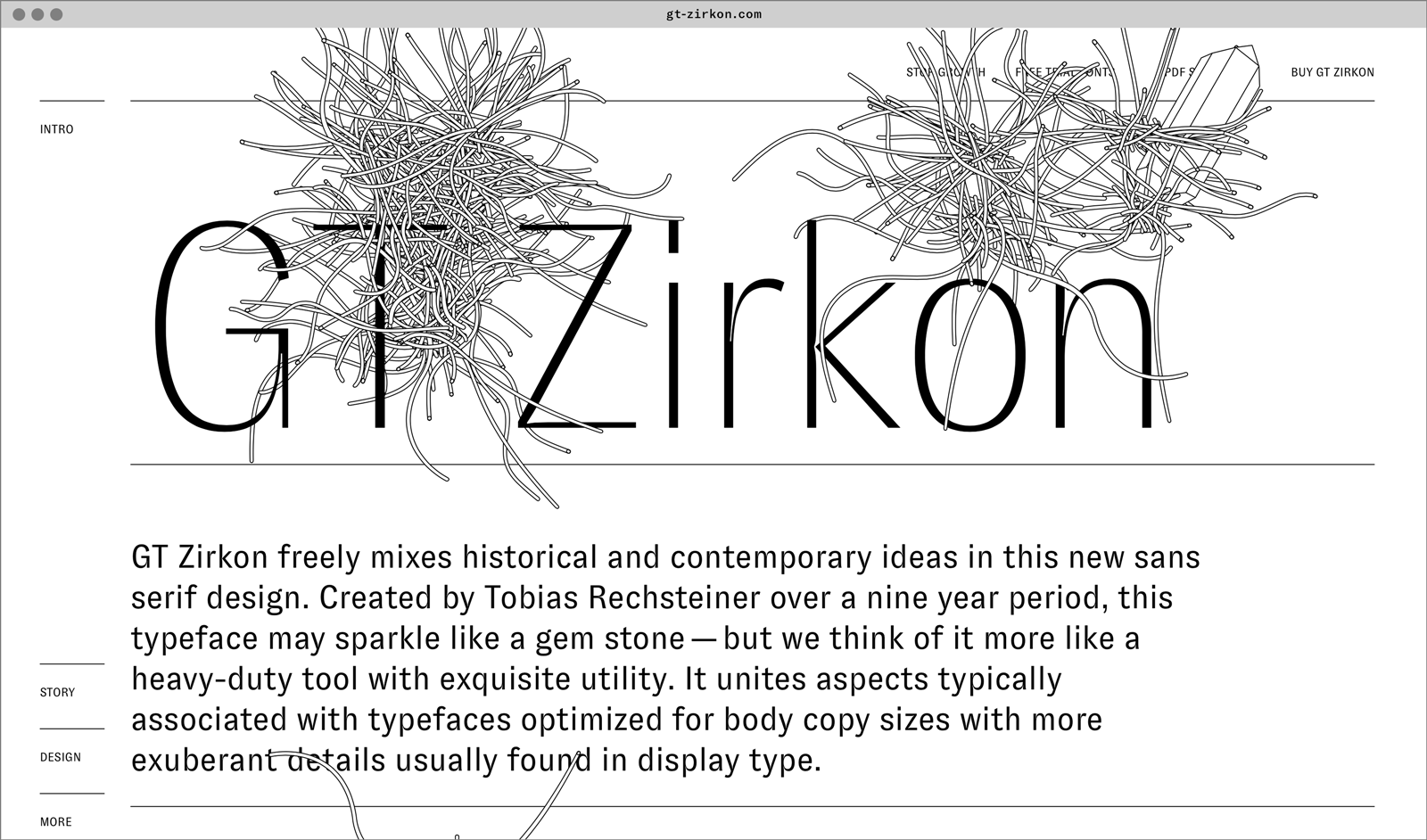
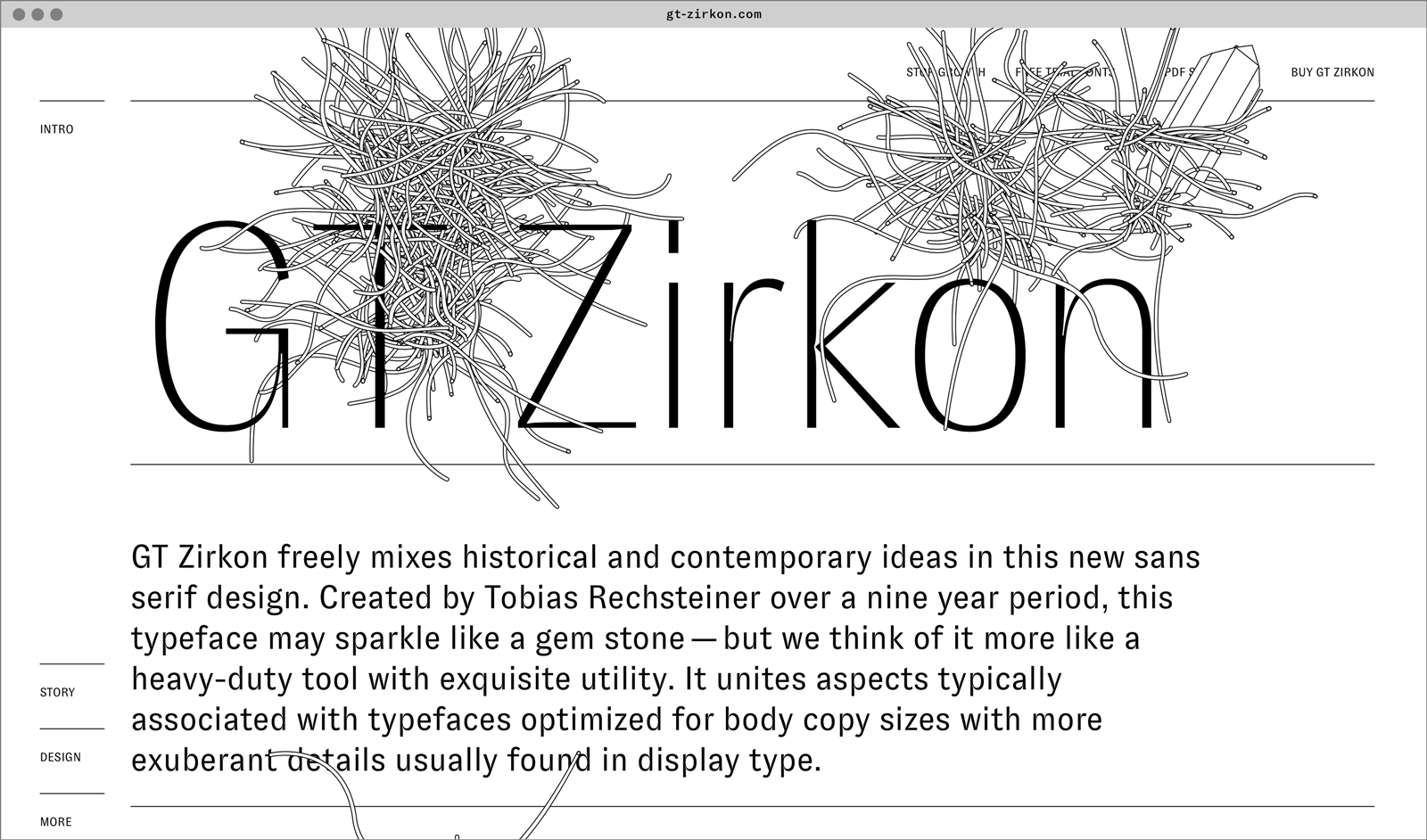
- Visit the GT Zirkon minisite to discover more about the typeface family’s history and design concept.
GT Zirkon in use
